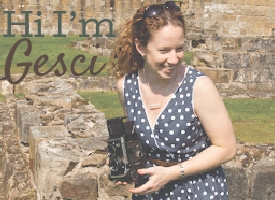Vajdahunyad-vár, or Vajdahunyad Castle. The castle was originally built in cardboard as a part of Hungary's millennial celebrations of 1896. The castle proved so popular that architect Ignác Alpár was hired long-term to rebuild it in stone and brick for posterity.
The city park pond, which transforms into an ice rink in the winter.
Entrance to Vajdahunyad Castle.
Grof Károlyi Sándor, a count.
The Museum of Hungarian Agriculture. Our guidebook said this would tell us everything we could ever possibly want to know regarding Hungarian agriculture, and, as fascinating as this sounds, we opted out due to our limited time.
The statue of Anonymous, the earliest chronicler of Hungarian history.
Ják Chapel, a copy of the 13th century Appey Church in Western Transdanubia.
A post box!
Budapest Zoo. I am an avid zoo-goer, and a staunch supporter of conservation and animal-welfare minded zoos. That said, Budapest Zoo made me quite uncomfortable, as its animals are kept in small areas, most very unnatural, and neither of us wanted to stay there long.
Before we left, we were able to see the keepers riding around in a horse-cart- low-emissions zoo vehicles are definitely an idea I can stand behind!
The tigers, whose habitat was mostly concrete, had an interesting food-source: what looked like an actual leg of an ungulate. This is completely natural, so I can't argue with it, but it sure is different than the Nebraska Brand big feline food I remember from Zoo Atlanta! This momma tiger wasn't upset with me taking a picture of her, rather she was protecting her meal from her three cubs.























No comments:
Post a Comment
Thanks so much for stopping by! I can't wait to read your comment!